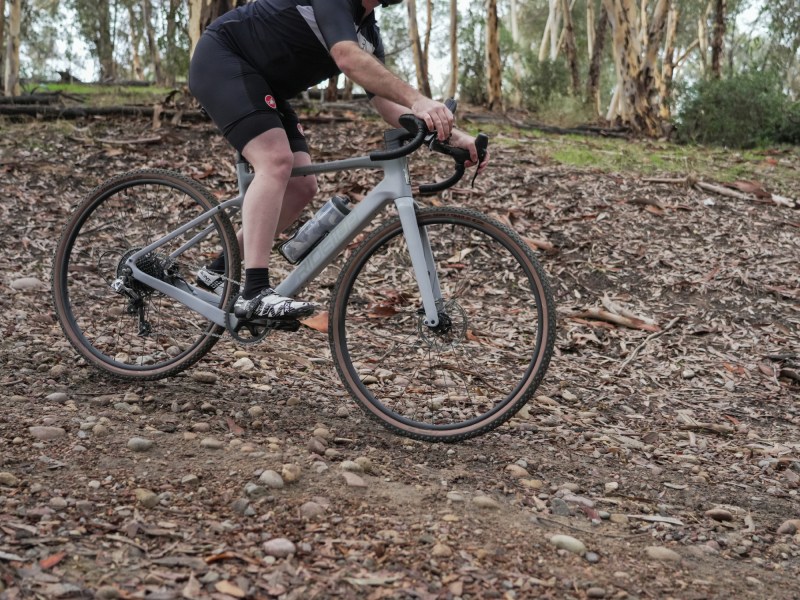
Ride1Up continues to build its reputation for quality electric bikes that sell for surprisingly low prices with the introduction of the Ride1Up CF Racer1. Racing-style drop handlebars immediately differentiate the CF Racer1 from other Ride1Up e-bikes. However, two less obvious elements underscore the CF Racer1’s role in the brand’s electric bike lineup: a carbon fiber frame and a stealthy electric power system.
The Ride1Up CF Racer1 is available in two sizes, Small (50 cm) and Large (56 cm), and two colors, Rainbow Black Gloss and Clouded Gray. There are two versions of the CF Racer1 for riding primarily on gravel or road pavement. The $2,295 price ($2,195 for a limited time) is the same for both sizes, colors, and versions.

The CF in the name stands for Carbon Fiber in the frame
You can’t tell by looking at the CF Racer1, but the “CF” in the model name stands for carbon fiber, the material used in building $10 million F1 race cars. Carbon fiber is more robust, stiffer, more durable, and much lighter than aluminum and stainless steel, qualities that endear it to the hearts of automotive performance design engineers if not the budgets.
Pick it up, however, and you’ll quickly notice the difference. The CF Racer1 weighs only 28.6 pounds, which is low by e-bike standards. For example, the Ride1Up Roadster V2, a roughly similar electric bike with conventional handlebars and an aircraft-grade aluminum 6061 frame, weighs 34 pounds. E-bikes with carbon fiber construction often sell at multiples of the CF Racer1’s price.

Ride1Up concealed the power unit in this e-bike
The CF Racer1’s second less-apparent design feature is its electric drivetrain. Can you see it in the accompanying photos? The e-bike’s 36-volt 7 Ah battery, 36-volt 15-amp controller, and 250-watt continuous power Bafang electric motor are concealed in the e-bike’s frame. Those power unit ratings are lower than you’ll see on most general-purpose e-bikes, but the intended rider won’t rely solely on battery power.
This bike is built for riders who will provide most of the power themselves by pedaling and will use the battery for extra help on lengthy trips and long hills and a quick boost for fast starts or to get over challenging obstacles.

The CF Racer1 road and gravel versions share most of the same components. Stopping power comes from the e-bike’s front and rear Rival 1 hydraulic disc brakes with 160 mm disc rotors and SRAM Rival 1 Ergofit brake levers. Rival 1 11-speed Doubletap shifters switch gears on the 11-gear cassette with an SRAM Rival 1 derailleur.
Other notable features include a one-piece handlebar and stem, which is good to have when riding hard so the bars don’t loosen with jumps or road irregularities. Both versions of the CF Racer1 support and soften your ride with Selle Royale Asphalt GF saddles.
The road and gravel versions of the CF Racer1 differ in the tires and tubes. Both variants have double-walled aluminum rims and Sapim 14G spokes. The road version of the e-bike uses Schwalbe E-One 700cx32 tires with 700Cx32 Black Butyl tubes. The CF Racer1 gravel model rides on Continental Terra Trail Shieldwall 700Cx40 tires with 700Cx35 Black Butyl tubes.
Whether you like to ride fast on gravel or road surfaces, Ride1Up’s CF Racer1 e-bike brings carbon fiber-framed racers within range of more budgets, and that’s a very good thing.




